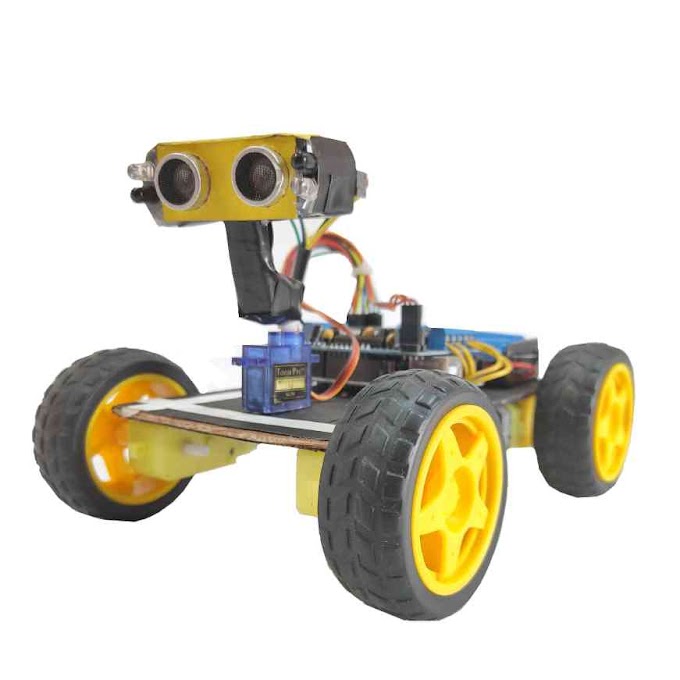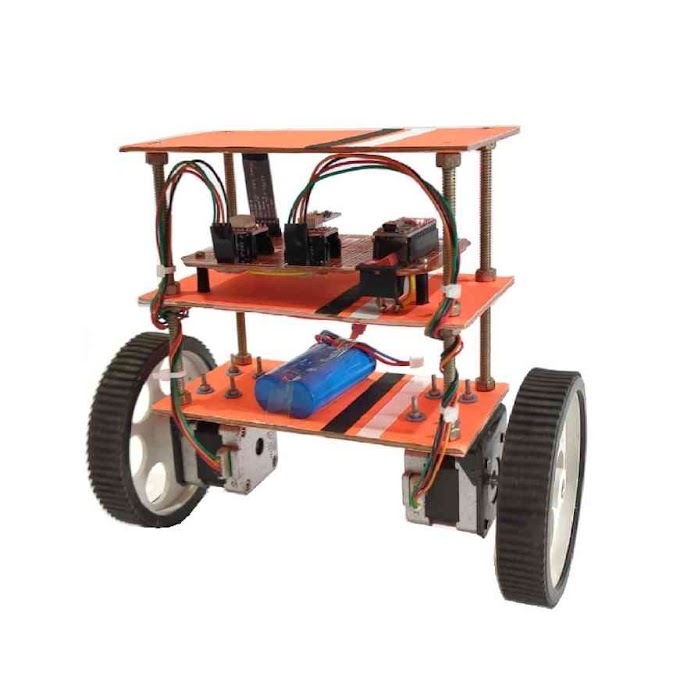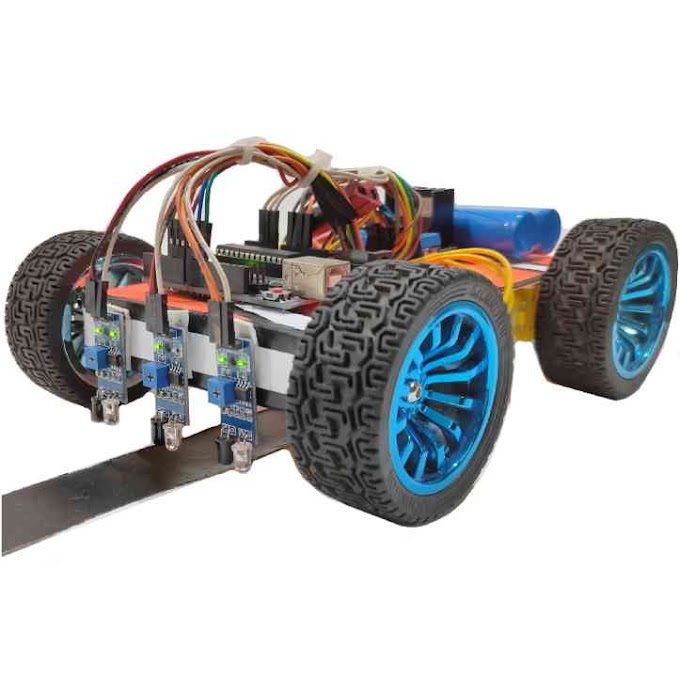Hello everyone! Welcome back to My Tech Studio. Today we will discuss about an Arduino based spider robot. So let's get started.
Spider robot using Arduino:
A spider robot is an example of robotic project where an Arduino board is used to control the movements of a spider-like robot. The spider robot usually has several legs, each of which is controlled by a servo motor. The servo motors are connected to the Arduino board, which sends signals to them to control their position and movement.
The spider robot can be programmed to move in different directions, such as forward, backward, left, and right, and can also turn and adjust its legs to navigate different types of terrain. The robot can be designed to move autonomously or controlled remotely using a wireless communication system.
Spider robots are popular among hobbyists and robotics enthusiasts because they provide a challenging project that requires skills in programming, electronics, and mechanical engineering. They are also a great way to learn about robotics and explore different types of locomotion.
Materials:
- Arduino board (Uno, Nano, or Mega)
- Motor driver module (L298N or TB6612FNG)
- 8 servo motor (for legs)
- 1 servo motor (for the head)
- Jumper wires
- Breadboard or PCB board
- Battery pack or power supply
- Robot chassis
- Screws and nuts
How to make spider robot using Arduino:
Building a spider robot using Arduino is a fun and challenging project. Here are the basic steps you can follow:
Step 1:
Prepare the robot chassis by attaching the DC motors to the legs and the servo motor to the head. The number of legs you want to use is up to you, but four is a good start.
Step 2:
Connect the DC motors to the motor driver module, following the pin out of the module. Connect the motor driver module to the Arduino board, using jumper wires to connect the input pins of the module to the output pins of the Arduino board. You may need to refer to the datasheet or manual of the motor driver module to determine which pins are which.
Step 3:
Connect the servo motor to the Arduino board, using jumper wires to connect the signal pin of the servo motor to one of the PWM pins of the Arduino board (pins 3, 5, 6, 9, 10, or 11). Connect the power and ground pins of the servo motor to the corresponding pins on the Arduino board or to an external power supply.
Step 4:
Upload the spider robot code to the Arduino board. You can find many examples of spider robot code online, or you can write your own using the Arduino IDE.
Step 5:
Test the spider robot by powering it on and sending commands to the Arduino board. You can use a serial monitor or a remote control to send commands to the Arduino board and control the movement of the spider robot.
Step 6:
Once you are satisfied with the performance of the spider robot, you can mount the Arduino board and the motor driver module on a breadboard or a PCB board, and attach them to the robot chassis using screws and nuts. You may also want to add sensors, lights, or other components to the spider robot to make it more interesting and interactive.
Remember to be careful when working with motors and high voltages. Always follow the safety guidelines and use proper tools and equipment. Good luck with your spider robot project!
Arduino Code:
#include <Servo.h>Servo leg1, leg2, leg3, leg4, leg5, leg6, leg7, leg8;int pos1 = 90;int pos2 = 90;int pos3 = 90;int pos4 = 90;int pos5 = 90;int pos6 = 90;int pos7 = 90;int pos8 = 90;void setup() {leg1.attach(2); // attach servo to pin 2leg2.attach(3); // attach servo to pin 3leg3.attach(4); // attach servo to pin 4leg4.attach(5); // attach servo to pin 5leg5.attach(6); // attach servo to pin 6leg6.attach(7); // attach servo to pin 7leg7.attach(8); // attach servo to pin 8leg8.attach(9); // attach servo to pin 9}void loop() {// move legs 1, 3, 5, 7 forwardfor (pos1 = 90; pos1 <= 180; pos1 += 1) {leg1.write(pos1);leg3.write(pos1);leg5.write(pos1);leg7.write(pos1);delay(10);}// move legs 2, 4, 6, 8 forwardfor (pos2 = 90; pos2 >= 0; pos2 -= 1) {leg2.write(pos2);leg4.write(pos2);leg6.write(pos2);leg8.write(pos2);delay(10);}// move legs 1, 3, 5, 7 backwardfor (pos1 = 180; pos1 >= 90; pos1 -= 1) {leg1.write(pos1);leg3.write(pos1);leg5.write(pos1);leg7.write(pos1);delay(10);}// move legs 2, 4, 6, 8 backwardfor (pos2 = 0; pos2 <= 90; pos2 += 1) {leg2.write(pos2);leg4.write(pos2);leg6.write(pos2);leg8.write(pos2);delay(10);}}
Arduino Code Description:
This code uses the Servo library to control eight servo motors connected to pins 2 through 9 of the Arduino board. The pos1 through pos8 variables store the current position of each servo motor. In the setup() function, the servo motors are attached to their respective pins using the attach() method. In the loop() function, the code moves legs 1, 3, 5, and 7 forward while moving legs 2, 4, 6, and 8 backward, then moves all legs back to their original position, creating a crawling motion. The write() method is used to set the servo motor position, and the delay() function is used to control the speed of the motion.
Again, this is just a basic example, and you can modify the code to control more or fewer servo motors, adjust the movement pattern, or add sensors and other features to your spider robot.















